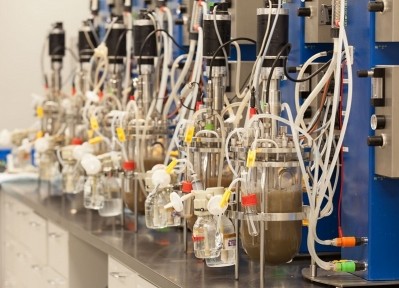RNAi for crop protection: how are the key challenges being addressed?

Up to 40% of global crop production is lost annually due to pests and $70 billion is lost is due to invasive insects. There is therefore a pressing need for effective, innovative and environmentally friendly pest management solutions.
An emerging one is RNAi technology. This uses double-stranded RNA (dsRNA) molecules to effectively silence defective and undesirable genes that affect the economic traits of crops, leading to improvements in crop varieties.
“It is a concept that isn't quite there yet but there are a lot of positives,” Agrithority's chief technology officer Gloverson Moro, who has nearly 25 experience of commercialising products, recently told AgTechNavigator. It’s not challenge free, he said. Pests can still potentially develop resistance to RNAi over time, for example, while regulatory frameworks for approving and overseeing RNAi pesticides are still being developed.
RNA molecules, meanwhile, can be directly applied onto crops without involving the RNAi mechanism – technology that new UK spin-out TraitSeq is hoping to leverage to accelerate plant breeding and protection.
How does RNAi protect crops exactly?
Renaissance BioScience, based in Vancouver, has developed technology that works by killing insect pests using RNA interference, or RNAi, which turns off target genes that are essential for the pests to survive or reproduce. This approach is based on gene sequences that are unique to the pests and will not harm other insects, plants, or humans.
“The study of RNAi in biology has been around for decades, but the use of RNAi for crop protection is relatively new,” said John Husnik, PhD, CSO and co-CEO, Renaissance BioScience. Some of the main challenges, he explained, include the instability of the RNA bioactive in the agricultural environment, the cost of producing these molecules, and regulatory concerns about the effects of the delivery technology on the environment.

To overcome these challenges the company has developed a yeast-based production and delivery platform method whereby the RNA molecules are produced by the yeast, which is a cost-effective, safe organism that has been used in food and agriculture for millennia. “This addresses the historical challenge of RNA instability because the yeast acts as a coat of armour, protecting these valuable molecules from environmental degradation,” Husnik said.
It also addresses the thorny issue of cost because yeast can be manufactured using traditional, established fermentation facilities, rather than requiring de novo synthesis. “Importantly, our yeast is inactivated and can be stored at room temperature and applied to plants using standard equipment. These benefits eliminate the requirement for novel methods of storage or application techniques.”
What pests can be targeted with this technology?
The initial focus is on controlling the Colorado potato beetle, a destructive pest of potato crops that is developing resistance to traditional chemical pesticides.
“This technology works best on Coleopteran species. However, we are also actively expanding our reach to address Lepidopteran pests as well. Because our technology is a plug-and-play system and can be designed to target a specific insect based on the sequencing of the RNAi bioactive molecule, we have the capability of targeting a wide array of crop pests provided the pest chews.
"In addition to our in-house target list of pests of interest, we’re also forming strategic partnerships with key industry players to develop tailored RNAi production and delivery systems for their specific pest challenges.”
To the aforementioned point that pests can still potentially develop resistance to RNAi over time, Renaissance said it's possible to input up to five different gene targets in the one yeast.
The odds of a pest developing resistance to one gene target is "possible but slim", it poined out, but five at one time is "astronomical".
What specific regulatory challenges does the company face?
The company received Canadian regulatory approval in 2023 for extensive field studies to test efficacy, application rates, and crop protection using this technology. “This type of product has already been approved in the US for use in crop protection, and we anticipate approval in other jurisdictions will follow shortly. Because our yeast is inactivated, the only bioactive ingredient is the RNAi, which is very specific, does not affect non-target organisms, and will degrade naturally in the environment.
"We do not anticipate significant challenges to regulatory approval as this technology becomes more and more commonly used.” Lab and field trial data are already validate the system as a robust and cost-effective RNAi delivery method in the market, he said.
Last October, Renaissance was awarded its first patent, by the Chinese Patent Office, for its technology for the production and delivery of RNA bioactive molecules.
“The patent for our yeast that produces RNAi bioactives has been granted in China and is pending in an additional seven jurisdictions. China is the global leader in the use of traditional pesticides and also in biopesticides and they are very interested in environmentally friendly advances such as our Renaissance RNAi biopesticide technology.
What’s next for this technology?
The technology has not yet been fully commercialised. Renaissance, however, has made significant progress in developing its novel RNAi biopesticide technology and securing regulatory approvals and patents. It is in the advanced development and field-testing stage, working towards an eventual commercial launch in collaboration with partners.
“There is an urgent need for effective, innovative and environmentally friendly pest management strategies and solutions to address crop destruction and yield reductions,” Husnik said. “We believe there is a significant market opportunity for our technology. Our aim is to continue working with industry leaders to develop crop protection solutions to improve food security by providing a healthier, safer alternative to chemical solutions currently in the market.”
In addition, Renaissance is currently using its RNAi technology to develop yeast-based orally delivered vaccines for livestock such as pigs, cattle, and poultry and aquaculture that are delivered through consumption in feed. “This technology can also be applied to deliver immune support bioactives, vitamins and minerals to livestock and aquaculture through oral delivery in feed.”



















